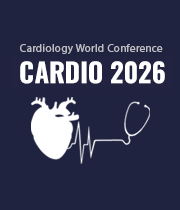Title : Hybrid approach of photon-counting computed tomography and intravascular ultrasound for chest pain: A case report of successful management and 6-month follow up
Abstract:
Introduction: Coronary artery disease is the leading cause of death among non-communicable diseases. Management stragedy emphasizes on early detection and optimal treatment, with emerging roles of imaging approaches. Photon-couting computed tomography is a new non-invasive diagnosis imaging tool, while intravascular ultrasound is a useful and commonly used in optimal coronary intervention. Combination of photon-counting computed tomography and intravascular ultrasound may arise as an innovation in prompt unstable plaque detection, pre-procedural lesion preparation and optimal percutaneous intervention. However, this method is novel and has not been documented.
Methods: We reported the first case of acute coronary syndrome with correlated lesion descriptions in photon-counting computed tomography and intravascular ultrasound results, along with intravascular ultrasound-based optimal coronary intervention and 6-month follow up.
Case report: This is a case of a 47-year-old female patient with a history of hypertension and type 2 diabetes mellitus. She presented after a 3-week course of typical angina episodes. The photon-counting computed tomography at the time showed 59.61% stenosis of proximal left anterior descending artery with a lipid volume of 69.2mm2, correlated to 35.2% of lipid core burden. She was then treated with clopidogrel, rosuvastatin, isosorbide mononitrate, metoprolol and trimetazidine. After 17 days, she still experienced typical chest pain at exertion. This led to her hospitalization. Vital signs at admission were within normal range. Electrocardiogram was not significant and troponin concentratin was not elevated. She was diagnosed with unstable angina and then proceeded to have coronary angiography. Intravascular ultrasound showed plaque ulceration in proximal left anterior descending artery with minimum lesion area of 2.6mm2, proximal reference diameter of 3.7mm, distal reference diameter of 3.2mm and plaque burden of 76%. The intervention decision was made based on two indications: chest pain refractory to medical treatment, and high-risk unstable atherosclerosis on intravascular ultrasound. A 3.0 x 28mm drug-eluting stent was employed and intravascular ultrasound was conducted after intervention to ensure optimal intervention, which revealed no egde dissection, minimum stent area was 7.4mm2 and was 92% of distal lumen reference. She was then discharged after an uneventful hospital stay. 6-month follow up showed absence of angina with improvement in physical health.
Conclusion: Combination of photon-counting computed tomography and intravascular ultrasound is new and promising. Early detection of unstable lesions in photon-counting computed tomography and proceed to intravascular ultrasound-based coronary intervention can improve diagnosis accuracy and bring optimal results to both procedural and clinical prospects.
Audience Take Away:
- Photon-counting computed tomography is useful, and non-invasive in unstable angina detection
- Intravascular ultrasound remains the most common and amicable in coronary intervention guidance
- Physicians can combine photon-counting computed tomography and intravascular ultrasound daily
- Photon-counting computed tomography is a new, essential tool and easy for training in the Imaging diagnostic department. Intravascular ultrasound is a part of the training program for interventionists around the world
- This combination will improve diagnostic accuracy, provide a practical way for intervention guidance and check for optimal intervention results. This approach can solve the disadvantages of traditional computed tomography and coronary angiography



